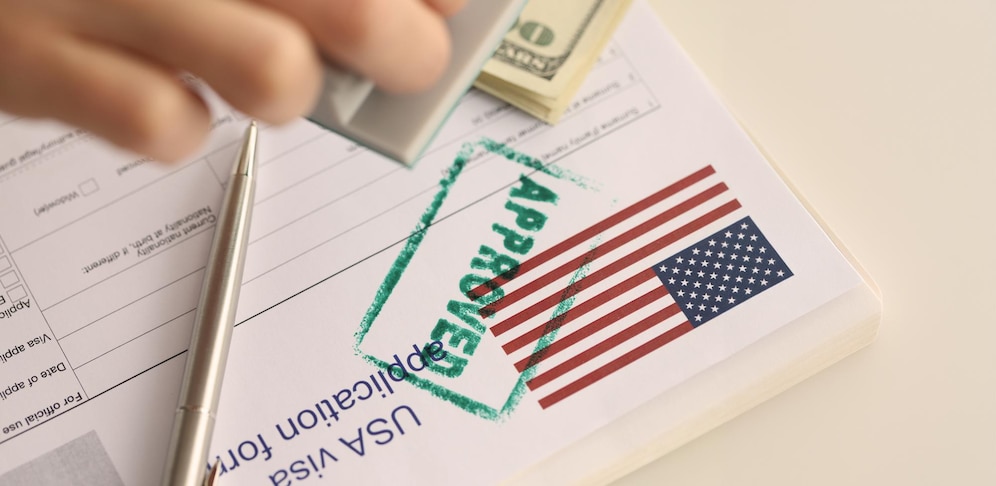USDA loans are mortgages offered by the U.S. Department of Agriculture (USDA) program, which is designed to break down economic barriers and provide assistance in some rural regions. Visit here.

An average personal credit score of 550 or better, and eligible homebuyers can get financing with no down payment, lower mortgage insurance costs, and reduced interest rates that would otherwise be below the marketplace-visit here.
USDA Mortgage Loan—These loans are for well-qualified buyers with extremely low incomes. They would allow someone to purchase a house they could never afford otherwise.
You’ll also need to buy a home in an area that the USDA considers “rural.” USDA Mortgage Eligibility: You can purchase a dwelling or refinance an existing one.
How do USDA loans work?
Smoke Team: USDA loans, also known as USDA Rural Development loans. Thanks to government guarantees and funding, lenders can offer 100% financing with below-market interest rates without too much risk.
Private lenders such as banks, mortgage lending institutions, and credit unions can issue USDA loans. The application process for a Homewise home loan is similar to that for other home mortgages available on the market.
So shop rates →, select a lender→, apply through your chosen mortgage agent, provide financial documents as requested, and wait for approval before you set up closing.
The USDA Direct home loans are for very low-income borrowers, and you must borrow directly from the Department of Agriculture.
USDA loans types:
Three of the USDA mortgage programs include:
USDA Guaranteed Loans:
Loans are issued through approved private lenders and guaranteed by the United States Department of Agriculture. The government secures that portion not to give you money but to mitigate risk for lenders and help get more favorable terms.
These loans generally carry lower interest rates and usually require no down payment or other type of collateral. The property’s location has to be in an eligible rural area, and borrowers have to meet household income guidelines for specific locations. EPI (Economic Policy Institute) standards are determined by location + how many people will reside at a given residence.
USDA Direct Loans:
Section 502 direct loans are available directly from USDA Rural Development for low-income families of modest means to purchase, build, and repair single-family houses that suit the applicant; targeted properties must be located in a rural area), according to the USDA website.
But with installments having stretching durations, hence making mortgage servicing affordable, burden down-to-earth payments –up. Despite income and credit qualifications, the property must also be in an eligible rural area.
USDA Home Improvement Loan:
Affordable Single Family Housing Repair Loans and Grants enable low-income rural homeowners to apply for funding assistance with interest-rate terms and fixed-rate loans.
USDA loan rules:
A USDA home loan requires different underwriting and has its own requirements if you use this product as direct or guaranteed financing.
There are a couple of general requirements for all USDA loans, regardless of whether they are based on buyer or property eligibility.
The USDA states that eligible areas cannot have a population over 20,000—check in with the USDA to verify that you can receive a grant. Alternatively, see this map. These loans are restricted to primary residences and cannot be used for investment property or second homes.
The first step is to purchase a property that meets the USDA’s basic home standards (this includes mold), such as being structurally sound and free from pests and peeling paint.
USDA loan requirements:
According to the USDA cash flow stats, the household’s earned wages may not exceed 115% of the area median salary for moving time. Generally, The Borrower’s stable income for 24 months is necessary to approve the application.
While USDA Direct Loans may have more lenient guidelines, lenders typically want at least a 640 credit score for guaranteed loans.
The maximum debt, including new home loans for any property that tugs at your heartstrings, should generally not exceed 41% to 45 % of gross (pre-tax) income before credit or cash reserve adjustments.
Applicants must (by law) Be US Citizens, non-citizens, or Qualified Aliens with a valid social security number.
USDA loan eligibility:
The USDA even has a nifty resource on its website to see if your property is included in eligible areas. To help them determine whether or not a property is in an eligible rural area of America that can be financed with a USDA home loan.

USDA Loan—Only green areas can approve a USDA loan, as shown in the black. Smaller black pockets in green expanses are generally cities with 20,000 (which aren’t eligible).
Loan rates of USDA:
It is one of the best interest rates for those looking for an alternative to owning a home under most mortgages. It is affordable and allows Reducers’ family finances to be combined with moderate—or low-in-reach homeowners living in America.
USDA interest rates are usually lower than those of other mortgage programs, including FHA and conventional loans. If you are satisfied with the statistics below, favorable home loan rates today will likely be your yucky.
| program | mortgage | APR- | Change |
| conventional 30 years fixed | 6.547% | 6.595% | unchanged |
| VA 30-year fixed | 6.302% | 6.351% | -0.49 |
| VA 30 year fixed | 6.394% | 6.343% | -0.56 |
Single Family Housing Direct Home Loans—According to the USDA, these bank loan alternatives are aimed at low-income and very low-income individuals. They have a fixed interest rate of 4.625%, which is literal, if not friendly, terms for eligible borrowers.
USDA-approved lenders set the interest rate on the guaranteed portion of these loans and will not exceed legally permissible maximums based on loan term: SOFR + 6.75% for variable or fixed-rate terms less than five years.
The 5-year Treasury note plus 5.0%, adjusted to a yield equivalent basis when closed more than four business days before the issue via secondary market sale agreement for fixed rates with terms greater than five years..
Find The Best USDA Mortgage Rates:
To be guaranteed the best USDA mortgage rates, your finances must look better because — well, then they are. Try Opting for These Ways
Credit score:
Purchases a better mortgage rate, hence improving your credit. Clean up your credit beforehand.
Put down a deposit:
This is not essential, but the fact that you are making payments shows the lender that they will get it back, thus increasing your chances. How much do I need to pay?
DTI ratio is a figure telling you how many percentages of your income have already been utilized monthly for paying the loans. This tells your debt management how and when to pay.
Find USDA lenders Shop Lenders:
Compare loan terms from multiple lenders. This adds up to many thousands of dollars over the life of that loan. A couple of different things to also remember that just because you are a first-time homebuyer, it does not mean the USDA financing offers better options for everyone.
USDA loan costs:
When it comes to financing a USDA loan for home buying, there are various costs associated with the process that prospective homeowners must consider. And, as we all well know by now, those costs can take a giant chunk of your home-buying budget.
Essential USDA loan costs:
USDA is charged a 1% loan guarantee fee. Paying in advance is excellent news, but you can also have that fee rolled into the balance of your loan.
MIP — mortgage insurance premium of 0.35% annually on the remaining principal balance is billed in 12 installments and comingled with a regular payment
Receiving a $100,000 loan:
Upfront mortgage insurance — approximately $1,000, although homebuyers must pay Annual MIP at 0.25% of the balance for a year.
Most people call this USDA upfront mortgage insurance, which is rolled into your loan. Property Inspection—Your property inspection verifies that the USDA compliance standards are met and can cost about $300-$500 alone.
2%-5% (cover Loan Origination fees, appraiser charges, and cost for title search companies). While that will be a giant number in and of itself, there are also some costs you can put into the loan balance instead of others that you will pay for (a little bit) out-of-pocket.
You have to allocate better and budget with it, considering costs. This is a good information tool for those preparing for their novice home-buying aptitude via USDA house loans.
Apply for a USDA loan here:
A USDA home loan can be an economical means of financing your house if you plan to buy in a rural region of India. Rural development loans require $0 down payments and offer super-low interest rates.

However, the USDA home loan approval process is multi-staged, and each level has it own specific eligibility requirement. Content-based from Apply For A USDA Home Loan Guide.
See your USDA eligibility:
Ensure you do that before starting the process if this type of loan can be eligible to apply for at USDA. Usually, these comprise:
- The lender may vary* Applicant min 640 credit score.
- 0, up to 41%, depending on the percentage of average annual debt service payments as a percent.
- Income limits by location and household size.
- Eligible property must be safe, decent, sanitary, and have a USDA-qualified location.
Compile required records:
You only need to submit a few papers that reveal your USDA Eligibility.
- Proof of income eligibility, pay stubs, and tax returns.
- Verification of employment.
- The credit history report.
- Driver ID: (driver’s license, passport, etc.)
Pre-qualification:
Take your information to an approved USDA lender and pre-qualify or even be pre-approved for a mortgage. This pre-qualification that is conducted helps the lender who will be providing you with this loan to determine what type of USDA funding.
Eligibility you have based upon your present fiscal standing. Pre-approval is a more solid loan approval and considers your financial records in great detail.
Search for properties:
Look for a USDA-compliant home that takes advantage of this program. The property needs to be your primary living space.
And should remain in an entitled non-urban spot. One of the big ones would be to have a USDA loan-experienced real estate agent assist you.
USDA housing loan application:
Once you have located the correct property, it is time to apply for a USDA loan. A complete financial review is a more precise look at your finances, and the lender will request this documentation, which can vary depending on who you work with.
The lender orders an appraisal to ensure the property meets USDA guidelines. In some situations, an evaluation is necessary to detect potential household problems.
Closed loan approval:
Loan approval follows after the assessment and inspection, in addition to all submitted documents. If allowed, you will then finalize the required papers and formally safeguard your USDA home loan.
When you are ready to move into your new home, you will have the Financing approved and Keys in hand!











Howdy! Do you know if they make any plugins to help with Search Engine Optimization? I’m trying to get my blog
to rank for some targeted keywords but I’m not seeing very good gains.
If you know of any please share. Many thanks! You can read similar
article here: Eco bij